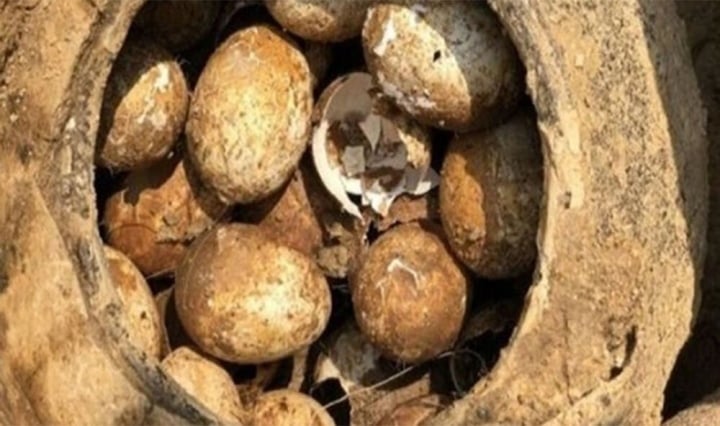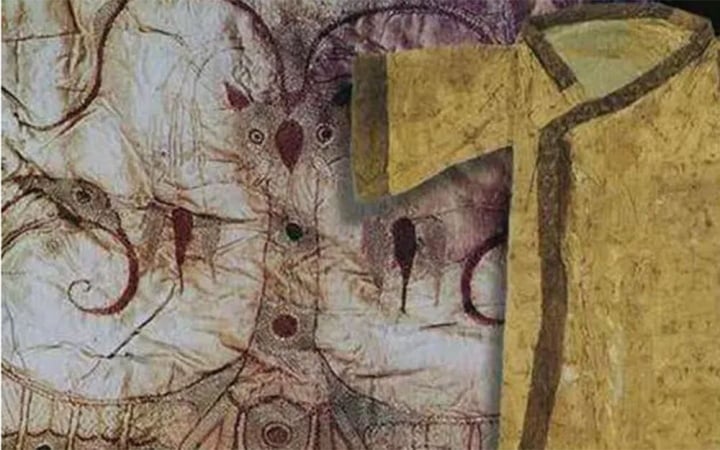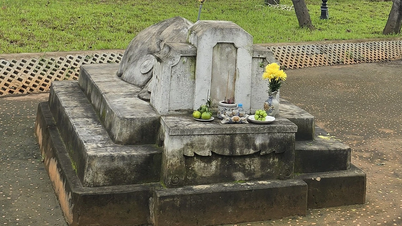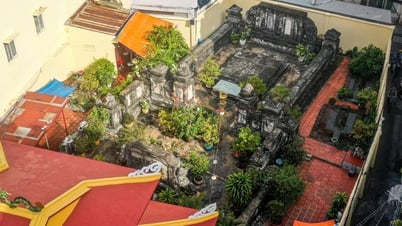With the concept of bringing a full life in the "other world ", many gold, silver, jewelry, treasures and other treasures became burial objects found in ancient tombs. However, in the process of excavating ancient tombs, the problem that makes experts and archaeologists "scratch their heads" is how to protect cultural relics in ancient tombs.
Typically, artifacts like ceramic vases, gold and silver vessels are immune to oxidation and can remain intact for thousands of years. But other artifacts are not. If not properly protected, these artifacts can be damaged by oxidation or other factors.
Funerary objects reflect the beliefs or living habits of ancient people. For example, if chicken eggs are found in an ancient tomb, it shows that the tomb owner may have liked to eat eggs, maintaining this hobby even after death. This is also a sign of the tomb owner's wealth and high status.
However, when discovering chicken eggs in ancient tombs of thousands of years, archaeologists absolutely do not touch them to avoid damaging the artifacts. Even if using the softest brush to touch the eggshells will still break due to being buried deep underground for hundreds of years. Instead, experts use X-ray methods to determine the quantity. In particular, through DNA testing, researchers can determine whether the eggs in ancient tombs have been soaked in salt or not.

A jar of chicken eggs was found in a 2,500-year-old tomb in Liyang County, Jiangsu Province in March 2019.
Besides chicken eggs, there are two colorful things that archaeologists will absolutely not touch immediately after discovering them in ancient tombs.
The first is frescoes. These are large paintings painted on walls, partitions or ceilings. When excavating ancient tombs, archaeologists often discover frescoes. These frescoes are carved or painted on the walls of ancient tombs.
Many frescoes can still maintain their original state with vivid colors and drawings thanks to the stable environment in ancient tombs. However, after the ancient tomb is opened, under the influence of oxidation, these precious frescoes may be damaged or turn black in a moment.
Second is silk. In fact, silk was considered a luxury and rare commodity in ancient times. This product was even used to name the "Silk Road", the famous trade route connecting the East with the West. Because of its rarity, silk and silk fabrics are rarely found in ancient tombs because they are easily destroyed.

Silk fabrics are artifacts that are very vulnerable to damage during excavation.
According to archaeologists, the reason why silk fabrics in ancient tombs are easily damaged is similar to that of frescoes. Specifically, under the catalyst of the oxidation process, just touching them can cause damage to these precious fabrics.
The reason why archaeologists in China do not dare to touch silk is partly due to past lessons. Accordingly, in the years 1956 - 1958, when excavating the Dingling Tomb, the tomb of Emperor Wanli of the Ming Dynasty, although many rare artifacts were found, including silk. Because the archaeological industry at that time was still backward and material conditions were lacking, some artifacts discovered in this tomb were seriously damaged.
Originally the silks in this tomb were very delicate and splendid. However, due to the sudden change in environment, these treasures began to mold and were damaged by the slightest touch. This was truly a huge loss to the archaeological community.
(Source: Vietnamese Women)
Useful
Emotion
Creative
Unique
Source




![[Photo] Closing of the 13th Conference of the 13th Party Central Committee](https://vphoto.vietnam.vn/thumb/1200x675/vietnam/resource/IMAGE/2025/10/08/1759893763535_ndo_br_a3-bnd-2504-jpg.webp)

![[Photo] Prime Minister Pham Minh Chinh inspects and directs the work of overcoming the consequences of floods after the storm in Thai Nguyen](https://vphoto.vietnam.vn/thumb/1200x675/vietnam/resource/IMAGE/2025/10/08/1759930075451_dsc-9441-jpg.webp)



























































































Comment (0)